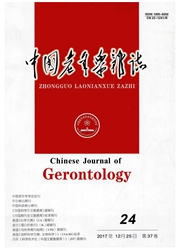

 中文摘要:
中文摘要:
目的探讨生物可降解高分子载内皮祖细胞CD34抗体支架是否可降低猪冠状动脉支架置入术后再狭窄。方法以生物可降解高分子聚乙二醇-聚乳酸-聚谷氨酸共聚物为载体,应用N-琥珀酰亚胺基-3-(2-吡啶二硫)-丙酸酯(SPDP)方法制成内皮祖细胞CD34抗体洗脱支架。18只猪随机分为三组,即紫杉醇支架组、CD34抗体支架组、裸支架组,每组6只,将紫杉醇支架、CD34抗体支架、裸支架分别植入到各组猪的冠状动脉损伤段,4W后处死,取出支架段血管行病理学观察及计算机网像分析血管管腔而积、内膜增生面积以及而积狭窄酉分比。结果CD34抗体支架组内膜增生面积较裸支架组减低(P〈0.05),紫杉醇支架组内膜增生面积较裸支架组也减低(P〈0.05),但较CD34抗休支架组无明显差别(P〉005)。结论生物可降解高分子载内皮祖细胞CD34抗体支架可明显加速支架置人术后血管内皮修复,降低冉狭窄的发生。
 英文摘要:
英文摘要:
Objective To investigate whether the stent coated with bio-degradable macromolecule carrying endothelial progenitor cells (EPCs) CD34 antibody can prevent restenosis in the porcine coronary after percutaneous stent implantation. Methods Bio-degradable macromolecule polyethyleneglycul-polylactic acid-polyglutamie acid (PLA-PEG-PGL) was used as the carrier, and EPCs CD34 antibody eluting stent was made by N-succinimidyl 3-(2-pyfidyldithio) propionate (SPDP). 18 swines were randomly assigned into paclitaxel eluting stent, CD34 antibody stent, and bare metal stent groups (n = 6). Paclitaxel eluting, CD34 antibody, and stainless steel bare metal stents were embedded into the injured coronary arteries of the swine respectively. After 4 weeks, all swines were killed and coronary arteries of stent section were obtained to observe the pathological changes and analyze lumen area, intimal hyperplasia area and the percent of stenosis area by computer graphic technology. Results The intimal hyperplasia areas of CD34 antibody stent and paclitaxel eluting stent groups were all smaller than that of bare metal stent group (all P 〈 0. 05), and there was no statistical difterenee between the paclitaxel eluting stent and CD34 antibody stent group (P 〉 0. 05). Conclusions The stent coated with bio-degradable macromoleeule carrying endothelial progenitor cells (EPCs) CD34 antibody can obviously reduce restenosis by accelerating vascular endothelial repairing after stent implanialion.
 同期刊论文项目
同期刊论文项目
 同项目期刊论文
同项目期刊论文
 期刊信息
期刊信息
